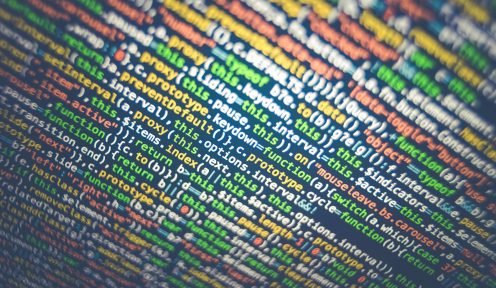
26.07.2021
Crime of documentary falsification (forgery)
Crime of Documentary falsification or forgery. Objective type. Subjective type. Material object. What is the difference between material and ideological falsehood? What types of documentary falsification are contemplated in the Penal Code?
 Por
Osa Otero, Sandra
Por
Osa Otero, Sandra Introduction
The crime of documentary falsification is committed when someone falsifies, alters, modifies or simulates a document. This crime is included in articles 390 to 399 of the Penal Code.
The protected legal right is the security of the legal traffic, the public faith and trust of citizens and institutions. Thus, it is intended to prevent the access to civil and commercial life of false evidentiary documents that alter the legal reality.
It is an intentional crime that has a technical nature and sometimes it is necessary that documentologists and handwriting experts intervene.
This crime provides for very high prison sentences and fines, for which it will be severely punished as we will see below.
Contacto No te quedes con la duda, contacta con nosotros. Estaremos encantados de atenderte y ofrecerte soluciones.Objective type
The requirements of this crime can be found in the extensive case law on the matter. We may cite among others the STS 167/2018, of April 11, which establishes the following elements.
The objective or material element by which the truth is mutated by the procedures of Article 390 Penal Code.
The subjective element or fraudulent intent consisting of the concurrence in the agent of the will and awareness of transmuting the truth.
And the mutatio veritatis that must fall on essential or capital elements of the document. And be of sufficient entity to effect the normal effects of the legal relations.

Si te ha interesado este artículo no dudes en leer:
Defects of consent: Brief concept, consequences.
Subjective type
The STS 723/2010 of July 23, 2010 points out the existence of the subjective element of the wrongful act of all types of forgery. This element is constituted by the purpose of the subject to alter the truth through a document. In this way he is able to deceive in the area in which the altered document is to take effect.
Jurisprudence has recognized the nuclear character of the subjective element of the crime. That will be integrated by the will and conscience of telling the truth. Thus, what really is not true will become truthful. The malicious intention will have to be accredited and proven. And in private documents a profit motive or other special intention will be required, unlike public documents.
Material object
The document will be the material object of this crime, which is defined in art. 26 PC. It will be any material support that incorporates or expresses data, narratives or facts with evidentiary effectiveness or with legal relevance.
Documents may include: public, official, commercial and private documents.
What is the difference between material and ideological falsehood?
Well, material falsehood involves the physical or material intervention on a document.
While material falsehood attempts against the authenticity of the document, ideological falsehood attempts against its veracity.
By way of example, material falsehood would be to scrape the date of execution of a document to replace it with another one. And ideological falsehood would be the case of a notary attesting to the (false) interventions of an act.
What types of falsification of documents does the Penal Code contemplate?
1. Falsification of public, official and commercial documents and of dispatches transmitted by telecommunication services.
This type of document forgery may be committed by public officials and authorities.
However, a private individual may also be guilty. In these cases, the ideological falsehood is excluded. And they will be punished both for the forgery and for the trafficking and use of the forged document. As long as they have knowledge of the falsity of such document.
The corresponding penalties will correspond to periods between 3 to 6 years and fines between 6 to 24 months. Likewise, special disqualification will be added, which they will have to face between 2 to 6 years.
2. Forgery of private documents
It shares similarities with the previous ones, but these will operate only for private documents, excluding, logically, public documents. Therefore, the active subject in this case cannot be other than private individuals.
Since it is a crime that is not committed by an Authority, or at least an Official, the penalties are lower. Committing a crime in this case will be punishable by prison sentences ranging from 6 months to 2 years.
An example of a private document would be a private sales contract.
3. Falsification of certificates
This type of crime may be committed by officials, public authorities, private individuals and practitioners. For all of them a financial fine will be imposed. But for civil servants and public authorities a suspension as a penalty will also be imposed.
In the case of medical practitioners, the fines range from 3 to 12 months. While civil servants and Public Authorities may face suspension of their activity from 6 months to 2 years.
Both the counterfeiter and the trafficker will be punished. And, obviously, the person who uses the forged document knowing its original character.
Exceptions to this are the certificates of the Social Security and the Public Treasury.
4. Forgery of credit cards, debit cards and traveler’s checks
This precept punishes those who copy, reproduce, alter, falsify, use or traffic with credit cards, debit cards or checks. That is, when they know of the falsity of one or all of them.
The punishment will range from 4 to 8 years imprisonment. It will increase in its upper half when this forgery is committed by a criminal organization or affects many people.
Conclusion
- Documentary forgery offenses are regulated in articles 390 to 399 of the Criminal Code.
- Documentary forgery is the alteration, modification, simulation or falsification of a document by a person.
- Moreover, it is a serious crime punishable with prison sentences and really high fines.
If this article has been of interest, we also suggest you to read the following article published on our website:
Habeas Data and its regulation through article 197.2 of the penal code












